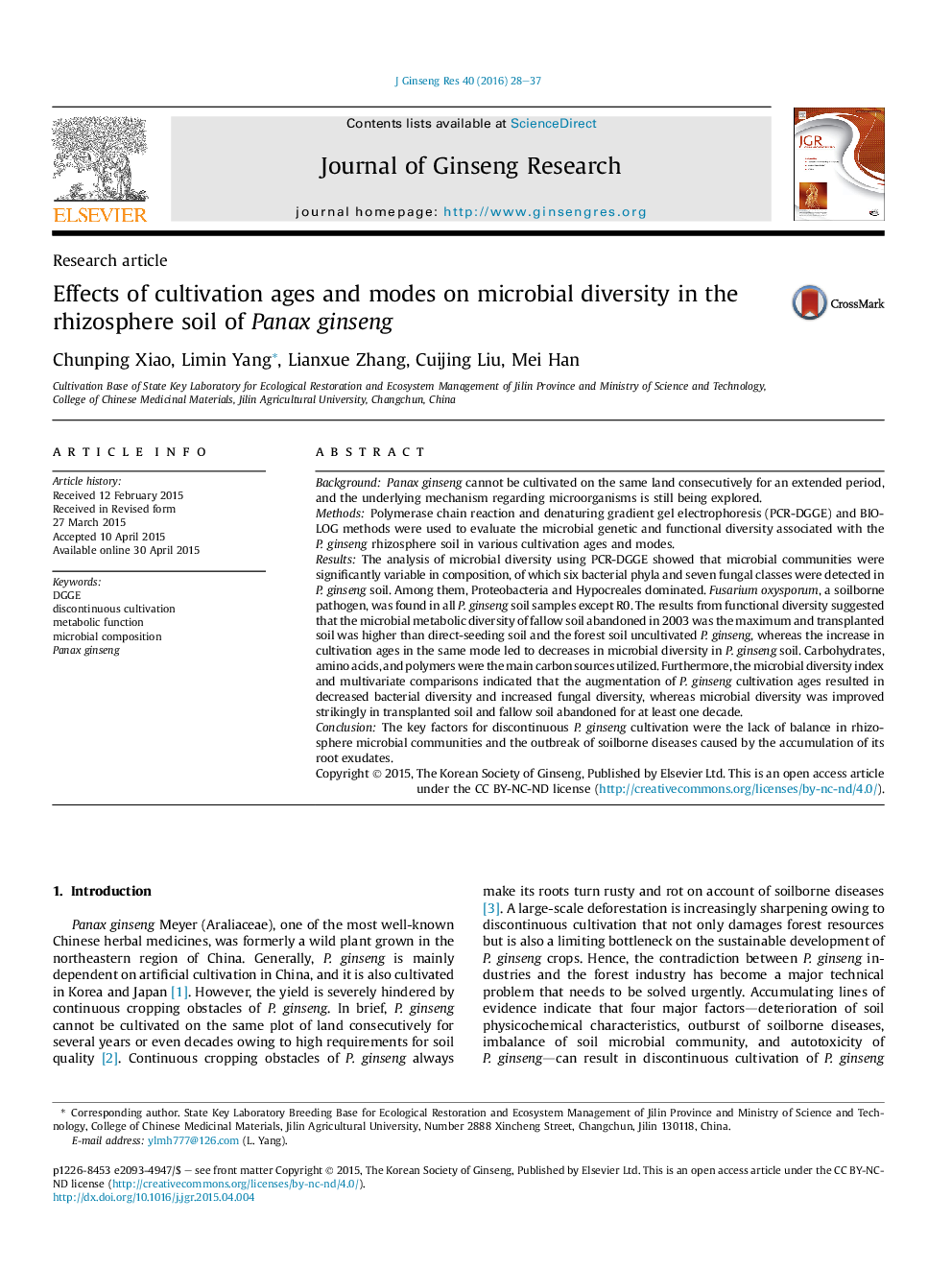| کد مقاله | کد نشریه | سال انتشار | مقاله انگلیسی | نسخه تمام متن |
|---|---|---|---|---|
| 3099311 | 1191097 | 2016 | 10 صفحه PDF | دانلود رایگان |
BackgroundPanax ginseng cannot be cultivated on the same land consecutively for an extended period, and the underlying mechanism regarding microorganisms is still being explored.MethodsPolymerase chain reaction and denaturing gradient gel electrophoresis (PCR-DGGE) and BIOLOG methods were used to evaluate the microbial genetic and functional diversity associated with the P. ginseng rhizosphere soil in various cultivation ages and modes.ResultsThe analysis of microbial diversity using PCR-DGGE showed that microbial communities were significantly variable in composition, of which six bacterial phyla and seven fungal classes were detected in P. ginseng soil. Among them, Proteobacteria and Hypocreales dominated. Fusarium oxysporum, a soilborne pathogen, was found in all P. ginseng soil samples except R0. The results from functional diversity suggested that the microbial metabolic diversity of fallow soil abandoned in 2003 was the maximum and transplanted soil was higher than direct-seeding soil and the forest soil uncultivated P. ginseng, whereas the increase in cultivation ages in the same mode led to decreases in microbial diversity in P. ginseng soil. Carbohydrates, amino acids, and polymers were the main carbon sources utilized. Furthermore, the microbial diversity index and multivariate comparisons indicated that the augmentation of P. ginseng cultivation ages resulted in decreased bacterial diversity and increased fungal diversity, whereas microbial diversity was improved strikingly in transplanted soil and fallow soil abandoned for at least one decade.ConclusionThe key factors for discontinuous P. ginseng cultivation were the lack of balance in rhizosphere microbial communities and the outbreak of soilborne diseases caused by the accumulation of its root exudates.
Journal: Journal of Ginseng Research - Volume 40, Issue 1, January 2016, Pages 28–37
